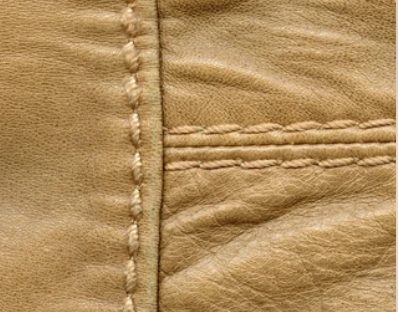Many people may be unaware, but fabrics are used in various ways. And they play a significant role in our daily lives. From infancy to adulthood, everyone is clothed with different types of fabric. We also use fabric in upholstery, shoemaking, homewares, and bedsheets. The focus of this post is on cotton and acrylic fabric
The Manufacturing Process of Fabric
Generally, three basic steps are followed in the fabric-making process. The first step is yarn production. Here, the harvested raw materials are processed and transformed into yarn and threads. This procedure is achieved by a process called spinning.
When done by hand, this process is cumbersome and time-consuming. However, with a spinning machine, the procedure is straightforward. While spinning, the fibers are collected on a cylindrical object called a bobbin. The spun fibers are connected to a long strand of thread or yarn.
The second step in the production process involves joining individual threads to form a fabric. This process, called weaving, is done on a loom machine. The loom requires two sets of yarn. The first set, known as the warp set, is strung across a metal frame, while the second set, called the weft, is connected to metal rods.
The weft is systematically arranged with one thread per rod. A computer controls the loom and lets the weft weave the fabric correctly. It is essential to mention that there are other methods of joining fabric, such as knitting and crocheting, especially with wool materials.
The woven fabric is removed from the loom and prepared for the last processing stage. The new fabric from the loom is also called greige. It is filled with debris, seed particles, and impurities and must be cleaned before transforming into textiles.
The first step is to treat the new fabric with bleach to purify the base color. Then, it is treated with chemicals to get rid of oils, wax, and other elements you can find in fibers. Finally, the fabric can be shipped to textile manufacturers.
Now you get the drift of the fabric production process. Let’s get into cotton and acrylic fabric, including its features, uses, and maintenance.
Cotton Fabric
This fabric is commonly used worldwide and is gotten from fibers around the seeds of cotton plants. These fibers are round and fluffy once the seed matures. Cotton textile is chemically organic and does not contain any synthetic compounds.
The first use of cotton dates back to 5000 BC in India. The Indian subcontinent flourished due to cotton cultivation providing the people with enough sources of clothes and other textiles. Since the beginning of cotton production, it has been widely chosen due to its breathability and lightweight features.
Features
- Cotton is more durable than silk, but it is not as sturdy as wool, and it is more prone to pilling, rips, and tears. However, it is still one of the most popular and widely produced fabrics. The natural hue of this textile is white or slightly yellowish, and it has a pretty good tensile strength.
- Cotton is a fabric that can be washed on high heat and drapes well on the body. It absorbs much water yet dries rapidly, making it an excellent moisture-wicking fabric. On the other hand, cotton fabric is prone to wrinkling and shrinking when laundered unless pre-treated.
Uses
Cotton is prized for its adaptability, durability, and inherent comfort. Cotton’s strength and absorbency make it a perfect fabric for apparel and homewares and industrial products such as tarpaulins, tents, hotel sheets, army uniforms, and even astronauts’ clothing choices while in space. Velvet, corduroy, chambray, velour, jersey, and flannel are just a few fabrics made from cotton fiber.
Cotton may be blended with other natural fibers like wool and synthetic fibers like polyester to generate various fabric types for different applications.
Cotton is used in fishnets, coffee filters, tents, bookbinding, archival paper, and textile products like underwear, socks, and t-shirts. They are also used to make bandages, swabs, banknotes, cotton buds, and x-rays, among other things.
Care Tips
Cotton is a durable fabric that may be machine cleaned in warm water. Half the recommended dose of a color-safe detergent when washing cotton is advised. Give it an extra rinse if you want your cotton towel to be incredibly fluffy and soft. We recommend tumble or natural drying because cotton is prone to shrinking. To avoid damage or discoloration, avoid bleaching cotton fabrics.
Acrylic Fabric
Acrylic fabrics are manufactured from acrylonitrile, a synthetic polymer. Acrylic fabric is a fossil fuel-based textile since it is made by reacting certain petroleum or coal-based compounds with various monomers.
Features
- Acrylic fabric is quite warm and insulating, yet it is not breathable. It is more affordable compared to wool or other natural fibers. It also lasts a long time and is fairly durable, albeit prone to pilling.
- This substance is artificial and derived from petroleum and coal. It is constructed of plastic. Regardless, it has a delicate, springy texture that is pleasing to the touch.
Uses
Acrylic fabric is preferred in heat-retention applications since it is one of the least permeable textiles available. For instance, it is often used in athletic apparel, with tracksuits, hoodies, and athletic pants being common examples. However, because there is a possibility that acrylic is carcinogenic, it may be best to prevent skin contact with this fiber.
While other synthetic chemicals may be present in small amounts in acrylic fiber, it must include at least 85 percent acrylonitrile to be declared legitimate. The resulting fabric will have varying properties depending on the chemicals combined with acrylonitrile.
Care Tips
Remember that clothing made of acrylic fabric can be damaged by both cold and hot water. Acrylic can become stiff and inflexible when washed with cold water. It can melt and damage your washing machine and other objects in the load if washed in too hot water. As a result, acrylic apparel should constantly be washed in lukewarm water.
Acrylic fabric, in particular, is more prone to pilling than almost any other fabric. You’ll wind up with a pierce of apparel covered in pills that are the same color as the garments you washed it with if you wash an acrylic garment with garments that don’t nearly match its color.
Now you know the features of cotton and acrylic fabric, their uses, and how to care for them. You can source high-quality fabric from us. As wholesale manufacturers, we prioritize customers’ needs and ensure we exceed your expectation. Fill out the contact form for more information;







